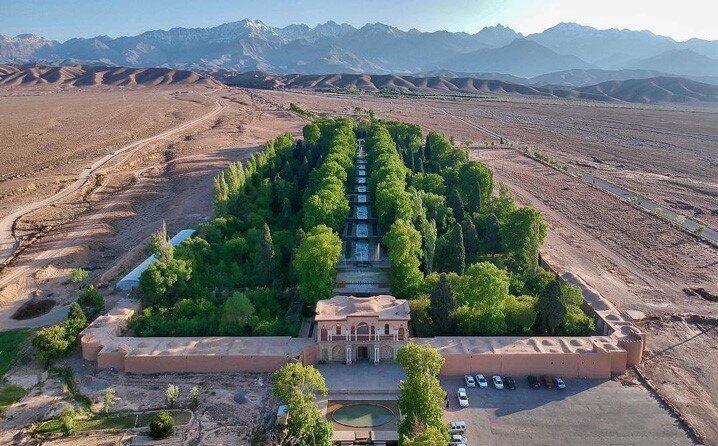Dredging operation to aid UNESCO-registered garden

TEHRAN—A dredging operation has recently commenced removing mud from the centuries-old channels that pour water into the UNESCO-designated Shazdeh Garden in southern Iran.
This operation is normally carried out twice a year to free water supply channels from mud caused by floods or agricultural work, a local tourism official said on Thursday.
Irrigation water for the garden, which is situated amid a barren oasis, is supplied from a qanat (subterranean aqueduct), the official added.
For thousands of years, qanat systems have supplied water to agricultural and permanent settlements in arid regions of Iran, tapping alluvial aquifers at the heads of valleys and conducting the water along underground tunnels by gravity, often over many kilometers.
In addition, Kerman province’s tourism department is to implement development initiatives to improve tourist amenities in the scenic garden. The project is expected to bring more satisfaction to visitors and help attract further sightseers, Freydoun Fa’ali said.
Shazdeh Garden is of high importance because it forms an enigmatic green oasis in the heart of a barren desert. Many visitors consider Shazdeh Garden a miracle due to its location.
The green property was constructed under the command of Mohammad Hassan Khan, the ruler of Kerman, during the Qajar era (1789–1925). Apart from the beauties of the garden, two-story mansions in the western and eastern parts of the garden perfectly represent Persian architecture. The main material used in them is brick, and the art of tiling is easy to recognize.
In 2011, a selection of nine Iranian gardens, including Shazdeh Garden, which bears important architectural, traditional, and cultural elements, were collectively inscribed on the UNESCO World Heritage list under the title of “The Persian Garden.”
One outstanding feature of Persian gardens is the arrangement of a pond in the center of the structure. The dance of fountains in the middle of Shazdeh Garden has given an admirable view of it that leaves everyone in wonder and appreciation.
For millennia, Iranian gardens have combined the magic of nature with the aesthetic qualities of art and architecture to create a symbolic representation of paradise on Earth.
A typical Persian Garden interweaves natural elements with manmade components to embody the idea of creating a paradise on Earth by the means of artistic, philosophical, figurative, and religious notions.
According to the UN cultural body, the flawless design of the Persian Garden, along with its ability to respond to extreme climatic conditions, is the result of an inspired and intelligent application of different fields of knowledge, i.e. technology, water management, and engineering, architecture, botany, and agriculture.
AM
